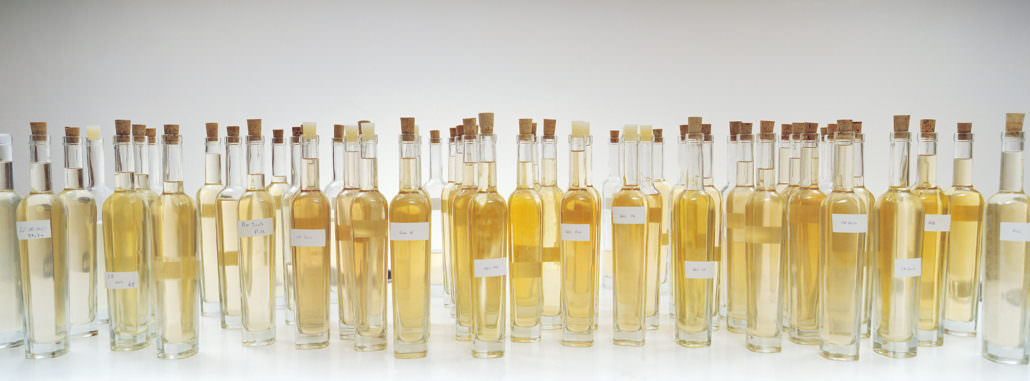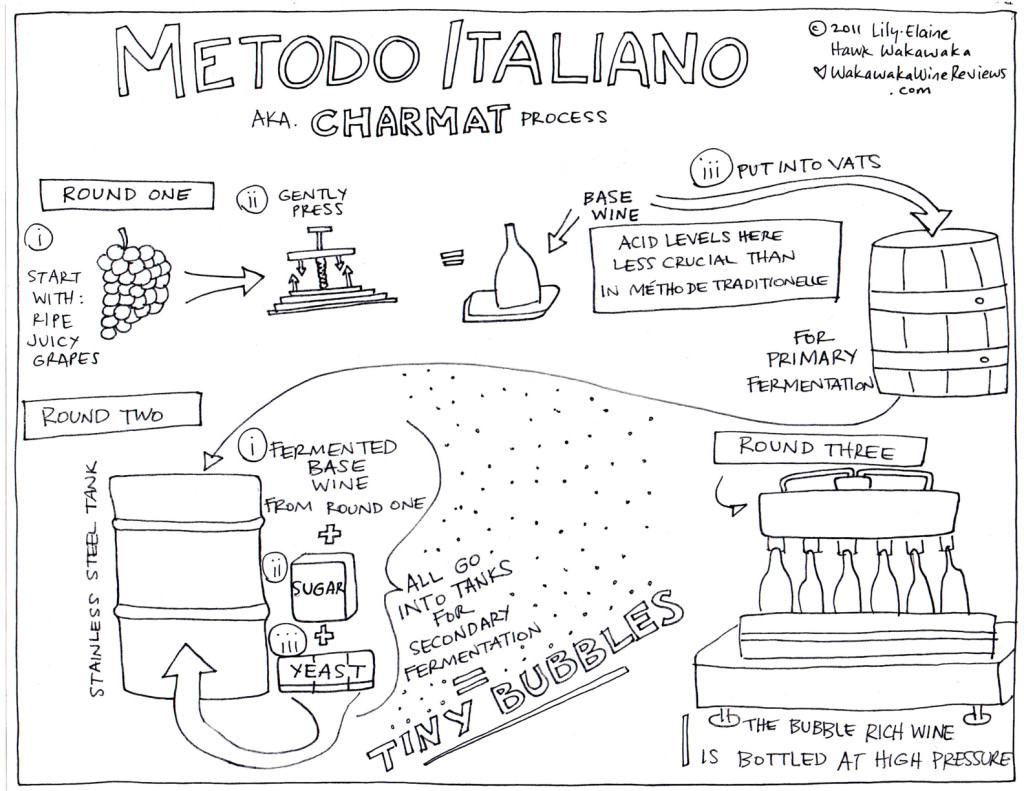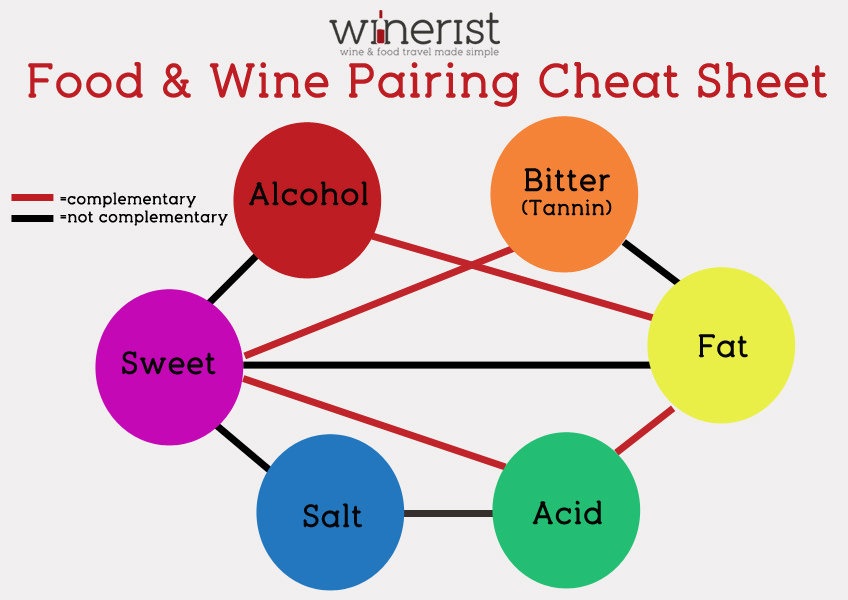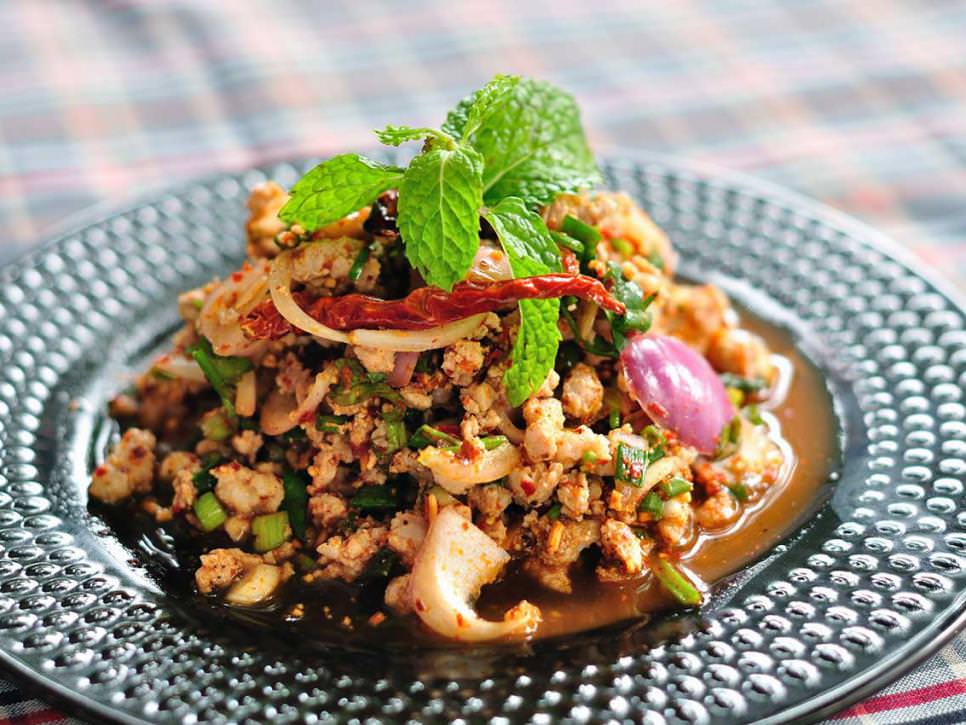Champagne is a great drink on its own! But it is also a wonderful match for many dishes, with very few exceptions. We have checked what the experts have to say about it and produced this article to guide you through the maze of accord – that’s French for food and wine pairing.

Sir Winston Churchill was so fond of Champagne that, according to some sources, he would have drunk 42,000 bottles of the famous sparkling wine from 1908 to 1965. Since he smoked an average of ten cigars a day, I would not be surprised if that number is indeed true. His quips on Champagne are great, and my favorite is, “Remember gentlemen, it’s not just France we are fighting for, it’s Champagne.”
You may, of course, drink Champagne alone. It is a wonderful apéritif, but you can also use the same bottle from hors-d’oeuvre to the cheese plate.
The Origins of Champagne

Even though some countries insist on calling their sparkling wines Champagne, in the vast majority of the globe respects the official categorization of this wine as being distinct to its namesake region, northeast of Paris. It is the northernmost wine producing area in France, and its cold climate helps to create the refreshing acidic character we usually find among the tiny bubbles of Champagne.
Dom Pérignon, the Inventor of Champagne?

In spite of the records pointing to a famous summer night in the Benedictine abbey of Hautvilliers on August 4, 1693, as the occasion when Dom Pierre Pérignon called his colleague abbots saying, “Come quickly! I am drinking stars!”, he did not create the French sparkling wine. In fact, the abbey lost around 20 percent of their wine bottles because the corks simply popped after the wines developed an unintentional second fermentation, which is now so desired. Those wines were dubbed le vin du diable, or “the devil’s wine”, a product which would likely not be welcome in an abbey’s cellar…

However, Dom Pierre Pérignon did find a way to produce white wine from black grapes (Pinot Noir and Pinot Meunier), and he developed the assemblage, a method of blending wines from different vintages to keep a certain style.
The Grapes Maketh the Wine

Surprisingly, a sparkling wine may be produced using any grape variety. Sekt, for instance, is the German sparkling wine that may be produced with local grapes (Riesling, Silvaner, Gewürztraminer) or international varieties (such as Spätburgunder or Pinot Noir), with different aromatic profiles.

The famous Spanish Cava blend is composed of indigenous grapes Macabeo, Parellada and Xarel-lo, and each grape contribute with a different characteristic to the final sparkling wine.

However, since Champagne adopts mainly three grapes (Chardonnay, Pinot Noir and Pinot Meunier; the other authorized varieties, Arbane, Petit Meslier, Pinot Blanc, and Pinot Gris, are almost neglectable), the rest of the sparkling wine producing world naturally tend to use the same grapes in their wines.
Most producers use 2/3 red grapes (the Pinots) vinified in white, complemented by ⅓ Chardonnay. A small number of Maisons have special cuvées (labels) made only with white grapes (called blanc de blancs) and even fewer produce wines only with the red grapes (blanc de noirs).
Each of these grapes has its own enchantment: Chardonnay is king in Champagne, contributing with freshness and elegance; Pinot Noir adds body and flavors, and the less known Pinot Meunier lends floral and fruity aromas.
The Second Fermentation
This, alas, is the difference between a still and a sparkling wine: this is submitted to a second fermentation, which produces bubbles and adds the sparkle to wine.

The second fermentation may be produced by many methods, but the most common is the traditional (or Champenoise) and the tank (or Charmat). In the traditional method, the second fermentation happens inside the bottle the wine will be sold in. The exceptions are the smaller (quarter bottles and half bottles) and larger bottles (bigger than a Jéroboam, equivalent to six normal bottles).

And how does it happen? Remember, in the case of Dom Pérignon’s cellar, it happened spontaneously because the first fermentation was not complete. This is the “Ancestral Method” that is still used in some parts of France, but in the sparkling wine industry, the second fermentation process is controlled.
After the still wine is produced, the winemaker will transfer it to the bottles and add a liquid called liqueur de tirage, a mixture of still wine, sugar, and yeast. It will induce the second fermentation, producing carbonation.

The bottles will be topped by a metallic cap and will rest for nine months to many years, depending on the style and quality level of the sparkling wine. During this period, the foam or carbon dioxide will develop, a process that the French call prise de mousse.
Degorgement
Over time, the yeast will die and turn into what is called lees, a process known as autolysis. The contact between the lees and the wine will give the latter the bread and brioche aromas which are typical of great sparkling wines, and the longer the lees are kept, the more pronounced and sophisticated the flavors will be in the wine.

The lees must be removed, lest the wine has an unsightly opaque look, with solids in suspension instead of the limpid, clear character we usually expect to see. This removal is called dégorgement, or disgorgement. First, the bottles are arranged in “A” shaped riddling racks, which helps the lees gather in the bottleneck. The bottles are turned (by hand or machine), a process called remuage.

Then a new liquid is added to the wine before the cork is inserted: now it is the liqueur de expedition or liqueur de dosage, a mixture of pure cane sugar and old wine. It is this liqueur that determines the kind of sparkling wine you will produce, from the extra-brut (between 0 and 6 grams of sugar/liter) to the more common brut (less than 15 g/l) to the demi-sec (from 33 to 50 g/l) and the now uncommon sweet (over 50 g/l).
The presence (or rather the absence) of sugar in the sparkling wine will be another important factor in selecting the best match for each wine style.
Tank or Charmat Method

Here, instead of producing the second fermentation in each bottle, you will induce it inside a steel tank. The main difference between sparkling wines made by the Charmat method and the ones made by the traditional method is in the aromatic profile: while the latter tend to have nutty and bread notes, the former is more fruity and floral. Bear this in mind when looking for pairings with food.
Oh, yes: all Champagne is made in the traditional method, as well as Cavas, Crémants, and the Italian top sparkling wines (Franciacorta and Trento). On the other hand, Prosecco, Lambrusco and most American sparkling wines are made by the tank method.
Another difference between the two methods is the bubbling and the pressure inside the bottle: traditional method wines have more bubbles – and more pressure, so be careful with that cork!
Pairing Champagne With Food
Champagne isn’t just for toasts, aperitifs, and parties. It can be paired, like any wine, with food if you properly adjust the components of the combination. This is one of the most important elements to take into account when pairing beverages and food: the champagne and the food it is served with should either match or contrast in a distinct way. For example, a contrasting combination would be salty foie gras and sweet Sauternes wine, while a matching pairing might be goat cheese and Sauvignon Blanc wine, which are both acidic.

With Hors D’oeuvres

The acidity of sparkling wines – which is remarkable – is one of the great pairing elements, making it the perfect match for canapés and hors-d’oeuvres: consider smoked salmon with rosé Cava or Champagne, foie gras with a Vintage sparkling blanc de noirs, Spanish Pata Negra ham, or cheese tartlets. In all those cases, the acidity balances or compensates the fat, unctuous elements of the tidbits.

Other than those mentioned, good choices for starters would be a blanc de blancs, a vintage Cava (especially with charcuterie), or an Italian Brut Franciacorta. If you plan to skip canapés, a chilled sparkling wine will make your guests mouths water in anticipation of the great dishes you have made for the evening.
Brunch

As they say, “A meal without wine is called breakfast”. No more! Weekend brunch is here to stay, and I’ll bet no one will ever say that there is too much Champagne in the Mimosa… Try a Brut non-vintage wine with a Croque Monsieur and see what is a great way to start a Sunday.
Caviar

I know, caviar is not everybody’s cup of tea. But many enjoy the sturgeon ova served on a small blinis or pancakes, with or without a sour cream. Blanc de noir brut wines are a great match to Osetra. Sevruga may be best served with along a non-vintage Champagne.
A tip: many say that the best way to serve caviar is with a mother of pearl spoon, so as to avoid the metallic clash between the roe and a steel spoon.
Truffles

Another difficult, but very sought-after delicacy, is the truffle. Its aromas may enhance a dish, but make it hard to find a match: try a mature Champagne with it. Regular mushrooms go really well with vintage brut wines because both evoke similar aromas.
Seafood

Yes, by all means, a blanc de blancs will go great with seafood, even more so if you are talking about oysters: for these delicacies, you won’t need a vintage wine; a good NV will pair beautifully.

For lobster medallions with rice, my formula can’t be beaten: a good brut rosé Champagne is one of those “made in Heaven” food and wine matches, just like Port and Stilton.

Meat
Contrary to popular belief, you may pair white wine with red meat, but there is a catch: you must avoid fatty cuts and heavy sauces. If you go with veal or filet mignon, which are lean cuts, you may pick a brut Vintage wine; with lamb, try a sparkling rosé.
Thai and Asian Food

Some of the best pairings for these dishes are German Sekt wines made with aromatic varieties such as Riesling or Gewürztraminer: the flavors of food and wine will blend seamlessly.
Cheese

This combination will depend on the style of the cheese: as mentioned, goat cheese goes best with the acidic aspect of Sauvignon Blanc, so a brut non-vintage sparkling would be best for them and for Camembert, Brie, or Comté. Avoid blue cheeses with sparkling wines, however; they are best paired with Port or Sauternes.
Dessert

I hate to tell you this, but it is unavoidable: it is very hard to produce a meal with the same sparkling wine when it comes to the dessert. The sugar content will clash with the dry sparkling wine, something you don’t want to happen. So the alternative would be to end dinner with a plain cup of strawberries unless you want to move to a demi-sec sparkling wine. In this case, the number of options is almost unlimited, even though I’d recommend that you avoid dishes with chocolate.
And Finally, Cigar, Anyone?

Yes, it may surprise you, but few things go so well together as a cigar and a good sparkling wine. I give you three reasons for it: first, the heat of the cigar smoke is balanced by the cool feeling of the wine. Second, the bubbles cleanse your palate and help you enjoy your stogie even more. And finally, the nutty, woodsy notes of the wine match the aromas from the cigar.
But you’ll have to think in terms of traditional method sparkling wines: the floral and fruity aromas in the tank-method wines will not match a cigar so well.
CONCLUSION
It is hard to produce bad matches between sparkling wines – especially Champagne – and food. On the contrary, the bad matches are an exception here, rather than the rule. But always keep an eye in the intensity of both to make it even better.

fantastic peace
Thank you!
Bravo!
With oysters, I’d rather drink Muscadet de Sevres.
Or, to be more truthful, I drink a vaster quantity of Muscadet than I would of Champagne…
I didn’t realize that the production of champagne was so labor intensive. Does therefore justify the premium price.
‘Crystal’ retails here in the UK for upwards of £150 per bottle, depending on vintage. That must be due to a labor of love!